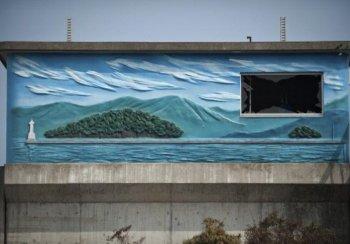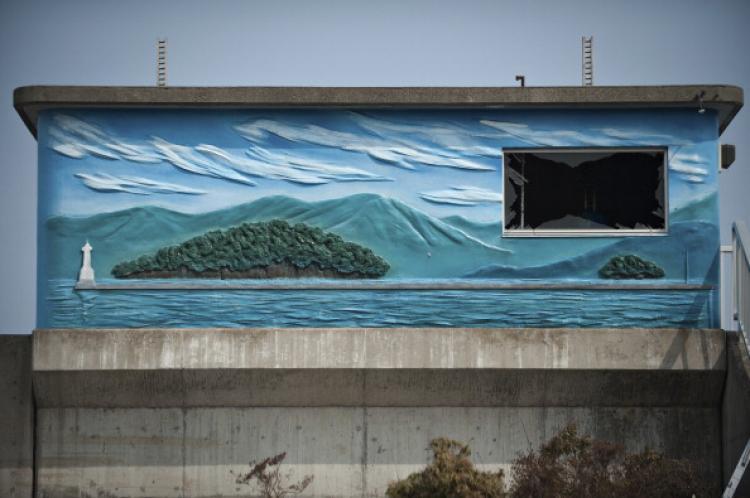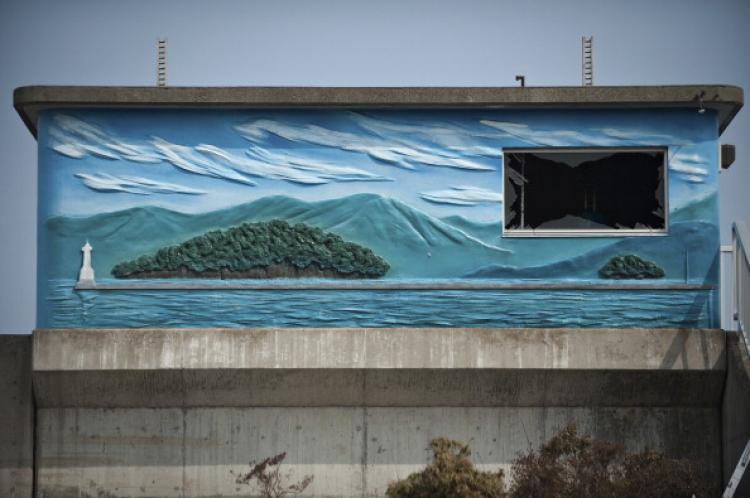Since the first explosion occurred at the troubled Fukushima Daiichi nuclear power plant on March 12, steam and smoke carrying radioactive iodine and cesium has been blowing east, out to sea. General opinion has been that it is fortunate the cloud is over the ocean, not forming over the rest of Japan or China. However, the consequence for marine life and ocean water could be equally harmful in the long run.
Last week, the Japanese government reported that higher than normal levels of radioactivity was detected in rainwater in Tokyo. Radioactive rain has almost certainly been falling into the ocean as well.
The International Atomic Energy Agency (IAEA) has detected radiation 18 miles out to sea, but said, according to the latest readings taken on March 27, that levels have been dropping from what they saw days earlier.
“It can be expected that the data will be quite variable in the near future depending on the discharge levels. In general, dilutions by ocean currents and into deeper waters as well decay of short lived radionuclides e.g. I-131 or I-132 will soon lead to lower values,” according to the IAEA’s March 29 update.
Trenches have been built at the Fukushima Daiichi plant to prevent the radioactive water used in cooling from flowing into the ocean. Officials said Tuesday that the levels of water in trenches a mile from shore have remained stable, but they are contaminated and they are still not sure how the contamination got there.
The IAEA says dispersion of the radioactivity through the ocean will take months or years to reach other Pacific countries. The main transport of contamination across long distances is through the air, said the agency, where it will likely be diluted.
Scientists at Simon Fraser University, in British Columbia, Canada, found iodine-131—a byproduct of nuclear fission—in the southern portion of Canada’s west-most province on March 19, 20, and 25. Nuclear physicist Kris Starosta told a press conference that the levels being seeing are not harmful to humans, but that the contamination certainly came from Fukushima, travelling to North American via a jet stream that crosses the Pacific Ocean.
Although the effects of radioactive elements in the ocean may not be immediately observable, the size of the ocean should not be viewed as sufficient to dilute the radioactive waste.
“The vastness of the ocean is often taken to mean that it has an enormous power to dilute most of man’s wastes. That is a misconception that led most nuclear powers to dump radioactive waste into the ocean, before doing so was banned by international treaty in the 1970s,” wrote Jacob Hamblin via e-mail. Hamblin teaches history of science at Oregon State University and has researched and written about the history of dumping nuclear waste in the ocean.
Next: Concentration through food web magnification...
The concern for many is not the immediate levels being recorded, but what will happen over time. University of Southern California biologist David Caron says, “even minute amounts have the potential to build to considerable concentration through food web magnification.”
When plants or animals retain these pollutants in their bodies and don’t excrete them, they pass it on up the food chain. So when a big fish eats many small fish that each have a little bit of this toxin, it becomes more concentrated in the big fish and may become a more serious threat. Humans, of course, are at the top of the food chain.
Caron said it is particularly bad when the body sees the pollutant as something like calcium and incorporates the pollutant into its bones. The radioactive elements in the steam and smoke from plant of most concern are iodine-131 and cesium-137, which are both readily absorbed by plants and animals. Both cause cancer and damage genes.
Cesium is absorbed by living organisms as if it were potassium, so it becomes part of the fluid electrolytes that travel throughout the body and is later excreted. Japan’s Fisheries Agency has said cesium will not grow in concentration in fish or fish roe for this reason.
Some nuclear waste is harmful, even if not biologically active, meaning plants and animals won’t incorporate the radioactive isotopes into their bodies. Plutonium, for example, is very harmful and can cause cancer if ingested or inhaled.
One of the big issues is that experts don’t know exactly how the different radioactive materials travel through various water systems.
“Scientists do not have a firm grasp of the pathways of these isotopes in every given environment. Each sea, bay, and estuary is different,” according Hamblin.
“Especially in areas like Japan and China, where people make extensive use of fish and other forms of mariculture, exposure to radioactivity is a serious issue,” wrote Hamblin.
At present no fishing is being done within the 18-mile radius of the Fukushima plant.
Last week, the Japanese government reported that higher than normal levels of radioactivity was detected in rainwater in Tokyo. Radioactive rain has almost certainly been falling into the ocean as well.
The International Atomic Energy Agency (IAEA) has detected radiation 18 miles out to sea, but said, according to the latest readings taken on March 27, that levels have been dropping from what they saw days earlier.
“It can be expected that the data will be quite variable in the near future depending on the discharge levels. In general, dilutions by ocean currents and into deeper waters as well decay of short lived radionuclides e.g. I-131 or I-132 will soon lead to lower values,” according to the IAEA’s March 29 update.
Trenches have been built at the Fukushima Daiichi plant to prevent the radioactive water used in cooling from flowing into the ocean. Officials said Tuesday that the levels of water in trenches a mile from shore have remained stable, but they are contaminated and they are still not sure how the contamination got there.
The IAEA says dispersion of the radioactivity through the ocean will take months or years to reach other Pacific countries. The main transport of contamination across long distances is through the air, said the agency, where it will likely be diluted.
Scientists at Simon Fraser University, in British Columbia, Canada, found iodine-131—a byproduct of nuclear fission—in the southern portion of Canada’s west-most province on March 19, 20, and 25. Nuclear physicist Kris Starosta told a press conference that the levels being seeing are not harmful to humans, but that the contamination certainly came from Fukushima, travelling to North American via a jet stream that crosses the Pacific Ocean.
Although the effects of radioactive elements in the ocean may not be immediately observable, the size of the ocean should not be viewed as sufficient to dilute the radioactive waste.
“The vastness of the ocean is often taken to mean that it has an enormous power to dilute most of man’s wastes. That is a misconception that led most nuclear powers to dump radioactive waste into the ocean, before doing so was banned by international treaty in the 1970s,” wrote Jacob Hamblin via e-mail. Hamblin teaches history of science at Oregon State University and has researched and written about the history of dumping nuclear waste in the ocean.
Next: Concentration through food web magnification...
The concern for many is not the immediate levels being recorded, but what will happen over time. University of Southern California biologist David Caron says, “even minute amounts have the potential to build to considerable concentration through food web magnification.”
When plants or animals retain these pollutants in their bodies and don’t excrete them, they pass it on up the food chain. So when a big fish eats many small fish that each have a little bit of this toxin, it becomes more concentrated in the big fish and may become a more serious threat. Humans, of course, are at the top of the food chain.
Caron said it is particularly bad when the body sees the pollutant as something like calcium and incorporates the pollutant into its bones. The radioactive elements in the steam and smoke from plant of most concern are iodine-131 and cesium-137, which are both readily absorbed by plants and animals. Both cause cancer and damage genes.
Cesium is absorbed by living organisms as if it were potassium, so it becomes part of the fluid electrolytes that travel throughout the body and is later excreted. Japan’s Fisheries Agency has said cesium will not grow in concentration in fish or fish roe for this reason.
Some nuclear waste is harmful, even if not biologically active, meaning plants and animals won’t incorporate the radioactive isotopes into their bodies. Plutonium, for example, is very harmful and can cause cancer if ingested or inhaled.
One of the big issues is that experts don’t know exactly how the different radioactive materials travel through various water systems.
“Scientists do not have a firm grasp of the pathways of these isotopes in every given environment. Each sea, bay, and estuary is different,” according Hamblin.
“Especially in areas like Japan and China, where people make extensive use of fish and other forms of mariculture, exposure to radioactivity is a serious issue,” wrote Hamblin.
At present no fishing is being done within the 18-mile radius of the Fukushima plant.





